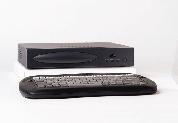

Many companies see the television set top as the next battleground for delivering digital content.
Many companies see the television set top as the next battleground for delivering digital content. These vendors want to provide a variety of functions, including digital television, video on demand, program guides, program recording, web access, e-mail, shopping and games. However, there is no clear picture of which combination of functions will succeed. Today, Linux is a minor player in this market but could become more popular, depending on how the market develops.
The key players on the set top are the cable and satellite TV providers. They are currently replacing their “dumb” decoder boxes with interactive set-top boxes (STBs) at a rate of one million units per month. Most of the initial deployment has been in Europe, but the United States is beginning to ramp as well. For example, Adelphia Communications plans to upgrade more than 25% of its 5.5 million subscribers by the end of 2001. These STBs provide shopping, e-mail, web access and other interactive services, along with standard TV programming. TV providers are eager to roll out these new units to reap an expected bonanza of new service revenues. Forrester Research estimates that interactive TV services will generate as much as nine billion dollars (US) in annual revenue by 2004.
To deliver these services, STBs rely on a variety of software customized to display video and web pages on a television set. Some use middleware, such as Liberate or OpenTV, running on top of a simple real-time operating system (RTOS). Others use complete STB operating systems like Microsoft TV (based on Windows CE) and PowerTV. Service providers can build their own applications on top of these (APIs) using Java or other popular languages.
With few exceptions, Linux is being passed over for use in these applications. Coollogic has developed a set-top box based on its Coollinux version of Linux, but this product has few adopters. Liberate and OpenTV could run on top of embedded Linux. However, many of Linux's key features—such as robust networking support and range of APIs—have already been duplicated in these middleware products, which have the bonus of being able to work around the shortcomings of a simpler RTOS. A generic Linux simply can't compete against the customized platforms available from companies targeting the rapidly growing STB market.

While not a prime choice for STBs, Linux does have a foothold in devices that might be called set-top companions. These are devices (such as digital video recorders (DVRs) and Internet access devices) that connect to the TV but are typically downstream of the decoder box. The biggest win for Linux has been the Tivo DVR, widely praised as a groundbreaking device. But Tivo sales remain well below one million units, mainly because of its high price ($299 US plus $10 per month).
Video game makers are also fighting for a place on the set top. Led by Sony PlayStation, more than 20 million video consoles were sold last year. Few of these devices deliver any functions other than gaming, but this is rapidly changing, as the Sega Dreamcast now offers web access and Sony's PlayStation 2 adds DVD playback as well. Microsoft's X-Box, due next year, will offer both of these features.
Single-function devices, such as Tivo and WebTV, will be the first losers on the set top. Just about everything that connects to the TV will soon have web access, and DVR functions will be easily added to any STB with a hard drive, such as the X-Box or Phillips' AOL-TV unit. By integrating DVR and web functions into other devices, vendors can deliver these functions at a much lower cost than in stand-alone products and greatly increase deployment. Furthermore, adding these features to other products reduces the number of boxes and wires connected to the TV. User interfaces for these multifunction devices, however, must be carefully designed to provide simple access to all functions.
The fiercest battle will be between interactive decoder boxes and video consoles. As long as broadcast TV is the primary use of the television set, the decoder box will be difficult to displace, since the cable and satellite companies use proprietary digital formats to deliver their content. On the other hand, video consoles have highly desired content that is also available only in proprietary formats.
In the end, most homes will have an all-in-one decoder box that supplies a variety of interactive functions. With the possible exception of DVR, which requires an expensive hard drive, these functions will have no up-front cost, just a monthly fee. Other homes may have a simple decoder box and use the video game console for web access and other advanced functions. Unfortunately, this scenario leaves little room for Linux. Several major vendors are well ahead in delivering TV-optimized operating systems and middleware. Video consoles all use proprietary operating systems optimized for gaming performance. Linux is great for a company like Tivo that needs to put together a new product quickly. In the long run, though, the only chance for Linux to succeed in this market is if Coollogic, or a similar company, can convince major STB vendors to adopt the platform.